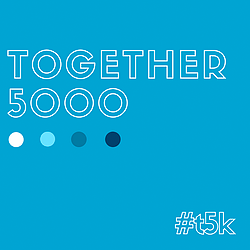The HIV epidemic in the United States disproportionately affects younger gay, bisexual, and other men who have sex with men (GBM). Though Pre-exposure Prophylaxis (PrEP) is effective at reducing new HIV infections, fewer than ten percent of people eligible for PrEP are estimated to be using it.1 In order to better understand how to design HIV prevention programs for this population, Dr. Christian Grov and colleagues were funded in 2017 to build a U.S. national cohort of persons at risk for HIV.
“Although researchers have been increasingly using the internet to enroll and engage geographically diverse populations, particularly for cross-sectional research, there was still a question as to whether and what extent it could be used to enroll large-scale cohorts and retain them longitudinally. We were one of four sites the NIH awarded an initial two years of funding to build a cohort,” said Dr. Grov.
Research has demonstrated that geosocial sexual networking apps are the modal way in which sexual and gender minority individuals who have sex with men meet their sex partners today. As such, Dr. Grov’s team identified and enrolled all participants using ads on these apps. In 2017-2018, the Together 5000 (T5K) Study enrolled more than 8000 HIV-negative men, trans men, and trans women who have sex with men from 16 to 49 years of age, who were not on PrEP, to better understand how to design HIV prevention programs for this population. Participants represented all 50 states, Puerto Rico, and Guam. 51% were persons of color, and 25% were between 16 and 25 years old.
In 2019, after achieving a series of rigorous milestones, the NIH extended funding for the study through 2022, allowing the team to follow the cohort for a full four years. As part of the annual follow-up measures, participants complete online surveys, and either take at-home HIV testing kits that are mailed to a study lab for analysis, or provide proof of a current PrEP prescription.
The team is now in the process of collecting month 24 assessments and plans to follow the cohort through month 48. As well, the team has been vigorously disseminating findings. To date, the team has published 5 papers and submitted 22 abstracts for professional meetings. They have an additional 6 manuscripts currently under review at peer reviewed journals.
In addition to the primary cohort study, the T5K team has been awarded three supplements. For their first supplement, Dr. Grov will be working with another LITE funded site (Dr. Jon Rendina, Hunter College) to evaluate the relative effectiveness of using different incentive structures to retain participants longitudinally—a important implementation science question that will be useful for future researchers. The second supplement (awarded to Dr. Viraj Patel, Albert Einstein College of Medicine) is being used to conduct a discrete choice experiment with 1,500 T5K participants to learn about their preferences for PrEP delivery. And the team’s most recent supplement is being used to enroll an additional 300 transgender men into the cohort—a population that has been relatively under studied.
“Our team has demonstrated the power that virtual cohort studies can have in informing HIV prevention efforts to end the epidemic. We hope this groundbreaking work can serve as a model to inform future implementation science research,” said Dr. Grov.
1 https://www.ncbi.nlm.nih.gov/pmc/articles/PMC6286209/







